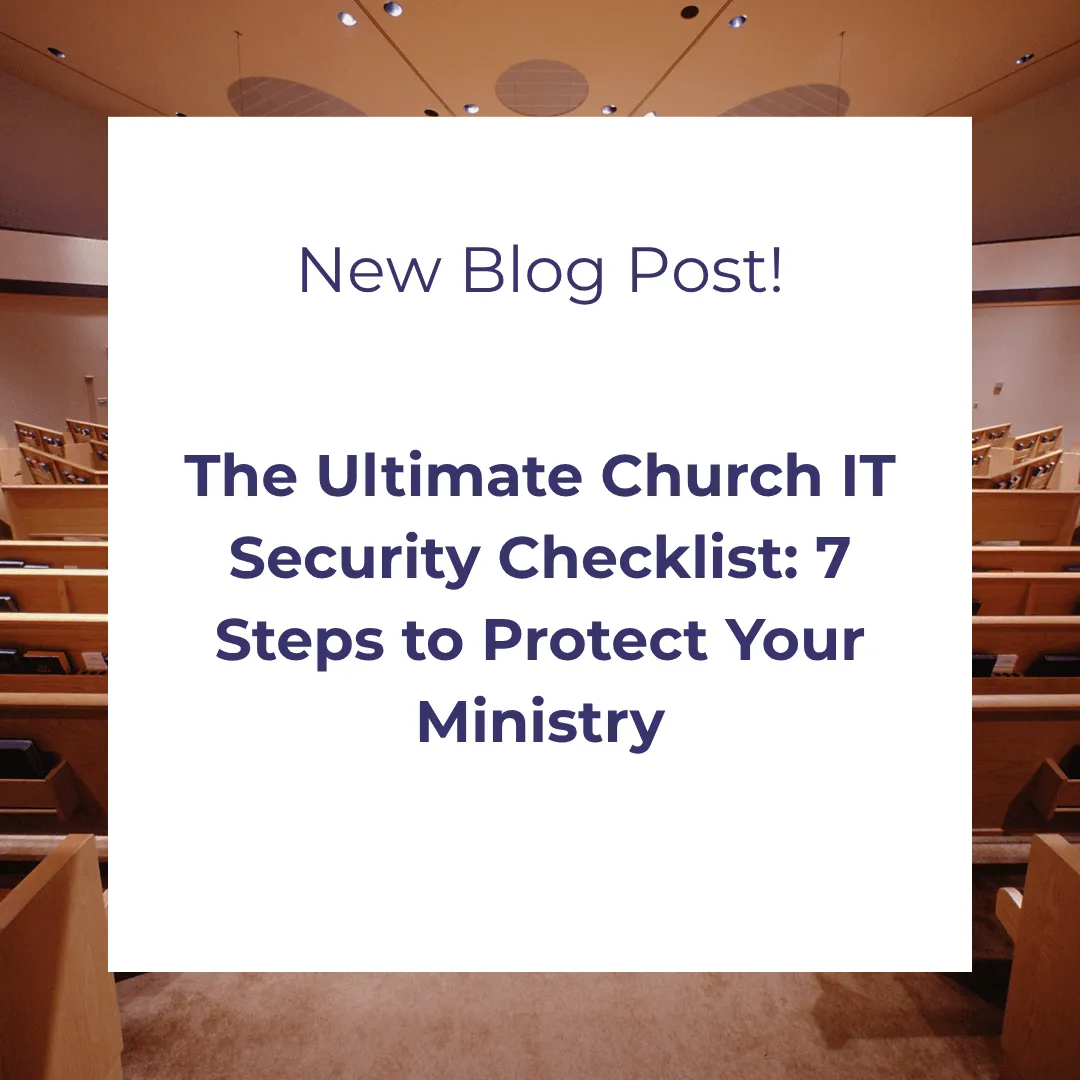
The Ultimate Church IT Security Checklist: 7 Steps to Protect Your Ministry
“Timothy, guard what has been entrusted to your care...”
- 1 Timothy 6:20 NIV
Introduction:
Your church holds a lot of important information. You have names, addresses, and giving records for your members. This information is precious. Keeping it safe is a big part of being a good steward for your congregation.
Bad actors online know that churches have this data. They also think churches are easy targets. But you can protect your ministry. You don’t need to be a tech expert.
Here is a simple checklist to help you keep your church’s computers and information safe.

With that said, here are 7 steps to increase your church's IT security! 👊
1. Use Strong Passwords
Weak passwords are like leaving a door unlocked. Bad actors can guess simple passwords like “Jesus123” or “Password” very easily.
Every account should have its own strong password. A strong password is long and uses a mix of letters, numbers, and symbols. A password manager can help your team create and store them safely.
2. Add a Second Lock (MFA)
Multi-Factor Authentication, or MFA, is like having two locks on your door. Even if someone steals your password, they still can’t get in.
MFA adds a second step to log in. This is usually a special code sent to your phone. It’s one of the best ways to stop hackers.
3. Keep Your Software Updated
Software updates can feel like a pain. But they are very important for security. When a company finds a hole in their software, they release an update to patch it.
If you don’t update your software, you leave those holes open for hackers to get in. This includes your main computer software and programs like Microsoft Office.
4. Use a Firewall
Think of a firewall as a digital wall around your church’s computers. It watches all the traffic coming from the internet and blocks bad things from getting through.
A good firewall is a basic but very important part of your security. It’s your first line of defense.
5. Have Good Antivirus Software
Antivirus software helps protect your computers from malware. Malware is bad software that can steal your data or break your computer.
Make sure you have a good antivirus program running on every church computer. And just like other software, keep it updated so it can catch the newest threats.
6. Back Up Your Important Data
What would you do if all your church files were suddenly gone? Ransomware is a type of attack that locks your files and demands money to get them back.
Having a recent backup of your data is the best way to recover from an attack like this. You should back up your files regularly and store a copy in a safe, separate place.
7. Train Your Team
The people using your computers are a key part of your security. It only takes one person clicking on a bad link to cause a big problem.
Help your staff and volunteers learn about security. Teach them how to spot tricky emails, called phishing, and why they should never click on strange links. When everyone is careful, the whole church is safer.
Feeling Overwhelmed? There's a Simpler Way
This checklist can feel like a lot to manage. You and your team are busy with the work of ministry. You shouldn’t have to be IT experts, too.
That’s where Systems Shepherd can help. We designed a simple service that handles the hard parts of IT security for you. We automatically update your software, back up your important data, and provide security that goes far beyond basic antivirus.
We take care of the technology so you can have peace of mind. Let us protect your ministry so you can focus on what matters most: your people.
Click here to learn how Systems Shepherd can protect your church's computer!
